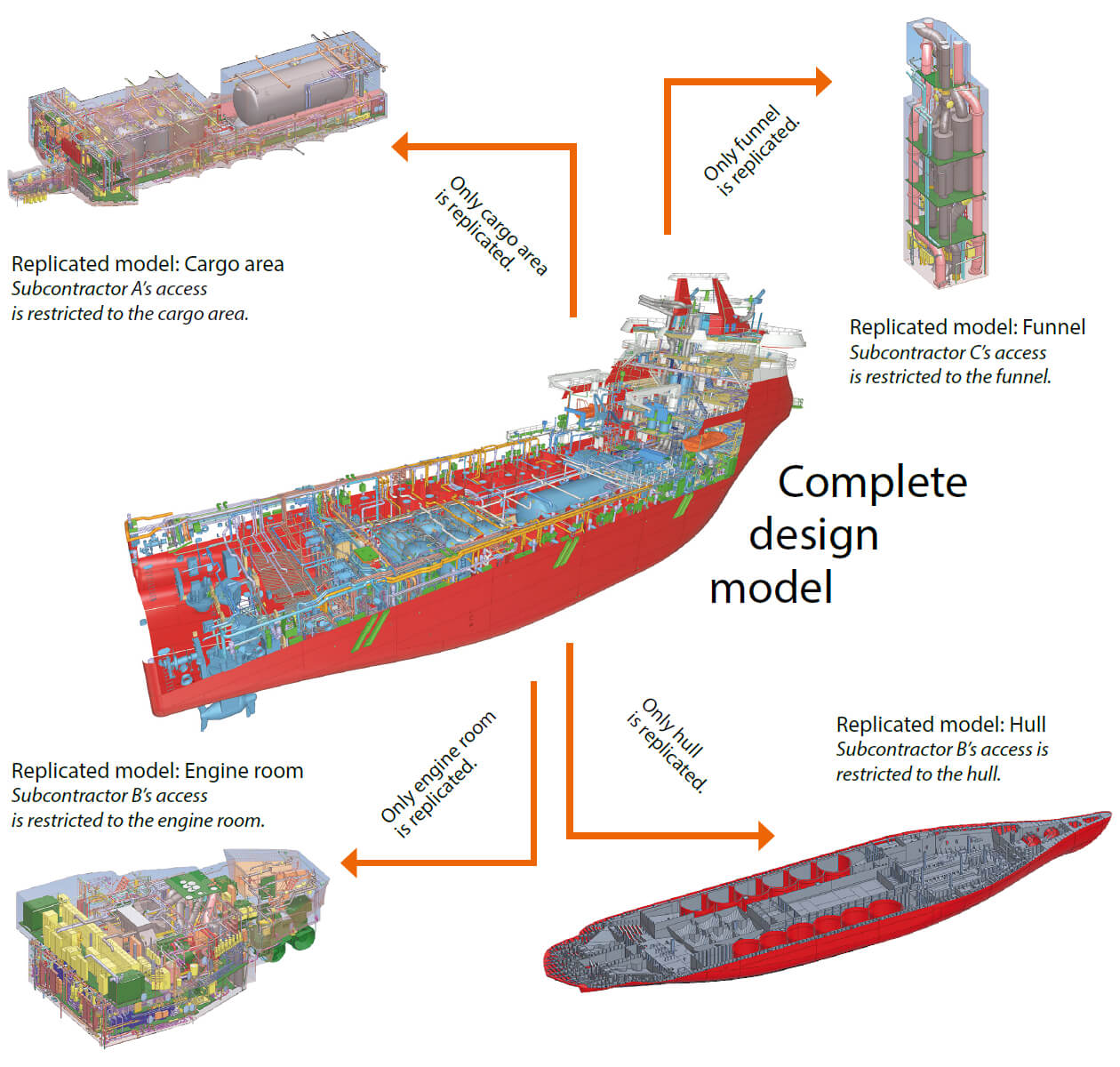11/08/2020
CADMATIC global work sharing
Overcoming remote work challenges on design and engineering projects
The Covid-19 pandemic has seen unprecedented restrictions on human movement, with many governments around the world urging citizens to work from home where possible. For design and engineering companies, this poses challenges in managing remote design and setting up networks that support the new normal. At the same time, companies must always ensure the integrity and security of project data.
Engineering companies faced with the urgent need to set up remote work processes, have encountered numerous challenges: the need for simultaneous work, geographically separated participants and subcontractors, weak and unstable internet connections from home offices, and limited possibilities for ICT support on site. Software providers for CAD design systems have had to react fast to ensure their licensing policies, which are usually tied to clients’ geographical locations, were relaxed and that the software can support the new work processes.
Challenges in remote work in 3D design and engineering
CAD design in big projects, such as process industry plants or ocean-going vessels is an iterative and complex process. It includes many stages and involves many specialists. Design teams often specialise in only one discipline, such as HVAC design, electrical design, or ballast water treatment, and have several team members who need to see the work of other teams in the 3D environment.
Setting up this kind of work with everybody in the same office is already in the ways of working and the whole society are not yet known.
Compared with many other industries, the engineering field has significantly better chances to adapt. Elomatic’s daughter company CADMATIC, which provides complex CAD solutions for multiple industries globally, was better prepared than most to deal with the pandemic and its effects. By the time Covid-19 started disrupting work and normal life, CADMATIC already had a wellestablished system for work sharing that had been fine-tuned for more than a decade.
Distributed design was initially needed to facilitate the work of remote teams and to add design teams with special expertise that are often located in different offices, companies, or countries. For software vendors that have not invested greatly in remote work sharing, however, it has been a steep learning curve to establish shortterm working solutions.
Managing everyday remote design work
The key to the CADMATIC work sharing system is its database system that efficiently stores 3D models, documents and component libraries in a database hosted by a server. This ensures that design work can be easily shared globally via an intelligent replication based on inbuild technology, and that new users or design teams can be added in minutes.
In globally distributed projects, data is updated at set intervals between remote design sites via an online network such as the internet, or in offline mode by exchanging the files in an email attachment. There is no need to send the complete database; for optimized performance, only changes are synchronized between sites. The automatic replication system takes care of data synchronization, thereby ensuring that no design hours are wasted due to incorrect information.
Change management is facilitated with work requests in 3D; a manager can assign certain objects, add a specific task for a designer and monitor progress.
For project reviews and management, designers can access all project documentation via a single web portal called eShare, without installation or distribution of licenses. It provides powerful 3D visualization with linked documents and integrated data about a whole project, while allowing designers to exchange comments and review the project.
For advanced cases, designers can use VR/AR sets to get a virtual experience of a 3D model on a one-to-one scale. This often solves ergonomic issues and enables a better understanding of layouts. The ability to conduct virtual tours enhances the design phase, which is often separated from construction. A world where physical distancing has become the norm has given a further boost to such technologies.
Managing IPR in work sharing
Another concern in remote work sharing, especially when subcontractors are involved, is securing trade secrets. Some parts of a 3D model, for example, may be for certain eyes only. It is important, therefore, that work sharing systems allow users to efficiently control access to their designs and thus protect their most important assets.
One way to meet these challenges is masking sensitive information or parts of projects to protect IPR. The project replication setup can include a filter for 3D objects to limit access for design teams to only parts of the 3D model and related information needed for their tasks. See Figure 1. The so-called filtered replication allows a user to restrict access to desired parts of a project. The project replication setup can include a filter for 3D objects via a 3D box-based selection. This way, the remote design team only has access to the part of the 3D model needed for their tasks.

Conclusion
Effective solutions for design work sharing with inbuilt IPR protection were important before the Covid-19 outbreak, but the pandemic has exponentially increased the number of employees and subcontractors working from home, which has led to unprecedented needs for and demands on work sharing. It is no longer only a tool to access the most efficient design resources around the globe, but an essential part of operations.
It is entirely plausible that a post Covid-19 world will see more distance working, which will increasingly highlight the efficacy of work sharing systems as drivers of efficiency and profitability.

